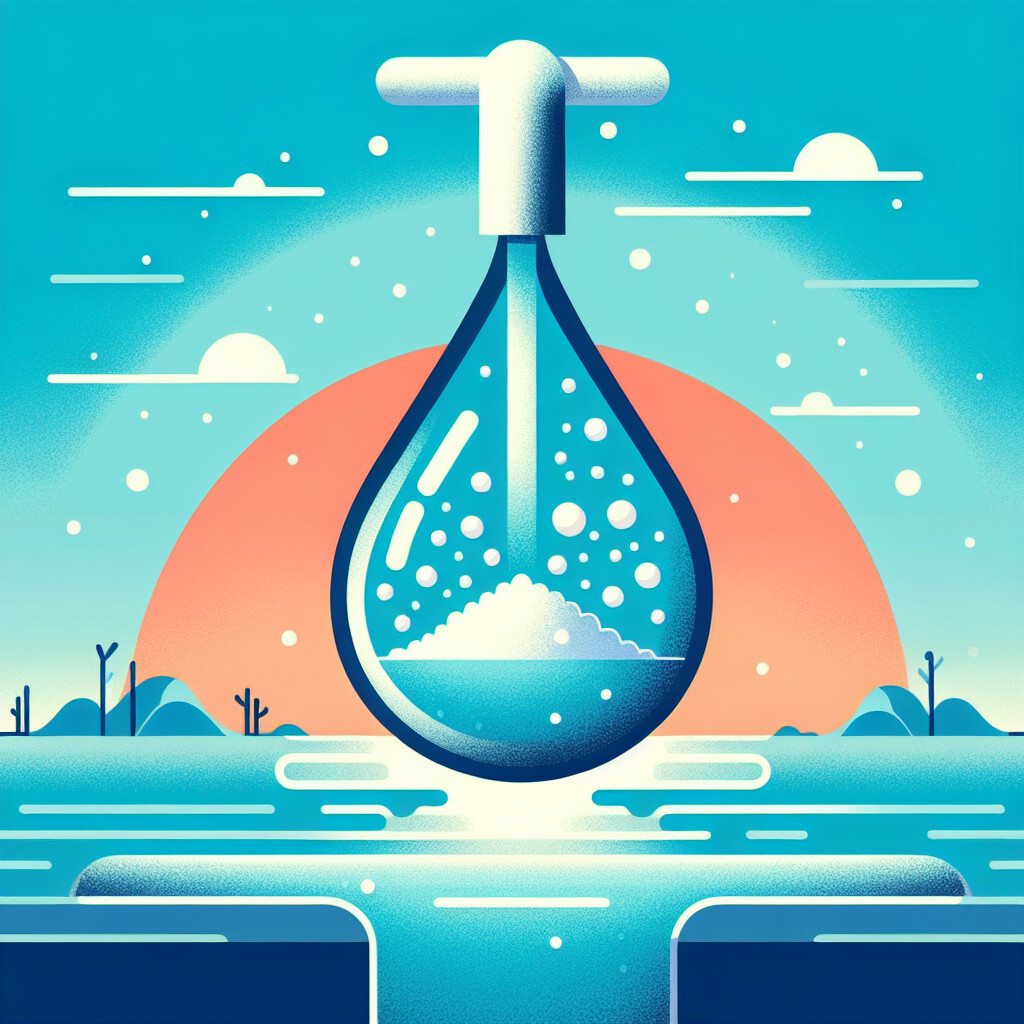-
Table of Contents
“Costa Rica’s Tap Water: Refreshingly Pure and Safe to Drink!”
Introduction

In Costa Rica, the tap water is generally considered safe to drink in most parts of the country. The water quality is well-maintained, especially in urban areas and popular tourist destinations, due to the country’s high standards for water treatment. However, in some rural areas or regions with less developed infrastructure, the tap water may not be as reliable for consumption. It’s always recommended for travelers to check local advisories or consider bottled water in such cases. Despite this, Costa Rica’s tap water is among the cleanest in Latin America.
Understanding the Quality of Tap Water in Costa Rica
Costa Rica, a Central American country known for its rich biodiversity and eco-tourism, has made significant strides in ensuring the availability of clean and safe drinking water for its residents and visitors. However, the quality of tap water can vary significantly across the country, and understanding these variations is crucial for both locals and tourists.
In general, the tap water in Costa Rica is considered safe to drink. The country’s water supply is managed by the Instituto Costarricense de Acueductos y Alcantarillados (AyA), which adheres to strict standards for water quality. The AyA conducts regular testing and treatment of the water supply to ensure it is free from harmful bacteria and contaminants. In fact, the World Health Organization has recognized Costa Rica for its high-quality water, comparable to that found in developed nations.
However, while the tap water in most urban and suburban areas of Costa Rica is safe to drink, the same cannot be said for all regions of the country. In more remote or rural areas, the quality of tap water can be inconsistent due to less rigorous testing and treatment processes. In these areas, the water may contain bacteria or parasites that can cause gastrointestinal issues. Therefore, it is recommended that visitors and locals in these areas boil tap water before consumption or opt for bottled water.
Furthermore, the quality of tap water in Costa Rica can also be affected by environmental factors. The country’s abundant rainfall can sometimes overwhelm water treatment facilities, leading to the possibility of contamination. Additionally, agricultural runoff and pollution can also impact water quality, particularly in areas near large farms or industrial sites.
Despite these challenges, Costa Rica continues to invest in improving its water infrastructure. The government has launched several initiatives aimed at expanding access to clean water, particularly in rural areas. These efforts include building new water treatment facilities, upgrading existing infrastructure, and implementing stricter regulations for agricultural and industrial pollution.
For tourists visiting Costa Rica, it is generally safe to drink tap water in hotels, restaurants, and other establishments in urban areas. However, it is always a good idea to ask locals or hotel staff about the water quality in the area. If in doubt, opt for bottled water, which is widely available throughout the country. It’s also worth noting that ice in Costa Rica is typically made from purified water, so it’s usually safe to consume.
In conclusion, while the tap water in Costa Rica is generally safe to drink, the quality can vary depending on the location and environmental factors. Therefore, it’s important for both residents and visitors to be aware of these variations and take appropriate precautions when necessary. Despite the challenges, Costa Rica’s commitment to improving its water infrastructure and maintaining high standards for water quality is commendable, making it a safe and welcoming destination for travelers from around the world.
Health Implications of Drinking Tap Water in Costa Rica
Costa Rica, a tropical paradise known for its rich biodiversity and eco-tourism, is a popular destination for travelers worldwide. However, one question that often arises among visitors is about the safety and quality of the tap water. This article aims to provide an informative and formal discussion on the health implications of drinking tap water in Costa Rica.
Costa Rica has made significant strides in improving its water quality over the years. The country’s government has invested heavily in water treatment facilities and infrastructure, ensuring that the tap water in most urban and tourist areas is safe to drink. The water is treated with chlorine to kill bacteria and other pathogens, making it safe for consumption. However, the quality of tap water can vary depending on the location within the country.
In the bustling capital city of San Jose and other major cities, the tap water is generally considered safe to drink. The same applies to popular tourist destinations such as Guanacaste, Puntarenas, and Limon. These areas have modern water treatment facilities that adhere to international standards, ensuring the water is free from harmful bacteria and parasites.
However, in more remote or rural areas, the quality of tap water can be less reliable. These areas may lack the necessary infrastructure to treat water effectively, leading to potential contamination. In such cases, it is advisable to drink bottled water or use water purification tablets as a precautionary measure.
The health implications of drinking tap water in Costa Rica are generally minimal, especially in urban and tourist areas. The water is regularly tested for harmful substances, and the results are usually within acceptable limits set by the World Health Organization. However, as with any foreign country, travelers may experience minor digestive issues due to the change in water composition. This is not necessarily a sign of contaminated water, but rather an adjustment period for your body.
Despite the general safety of tap water in Costa Rica, some health risks are associated with drinking untreated or contaminated water. These include waterborne diseases such as typhoid, hepatitis A, and traveler’s diarrhea. These illnesses are more prevalent in rural areas where water treatment is less comprehensive. Therefore, it is crucial for travelers to these areas to take necessary precautions.
It is also worth noting that while the tap water in Costa Rica is treated with chlorine, some people may be sensitive to its taste or have allergic reactions. If you find the taste of chlorine unpleasant, consider using a water filter or drinking bottled water.
In conclusion, the tap water in Costa Rica is generally safe to drink, particularly in urban and tourist areas. However, the quality can vary depending on the location, and there are potential health risks associated with drinking untreated water. Therefore, it is advisable for travelers to stay informed about the water quality in their specific location and take necessary precautions when needed. By doing so, you can ensure that your visit to this beautiful country is not marred by health issues related to water consumption.
The Process of Water Treatment in Costa Rica
Costa Rica, a country known for its rich biodiversity and commitment to environmental sustainability, has made significant strides in ensuring the provision of clean, safe tap water to its residents and visitors. The process of water treatment in Costa Rica is a testament to the country’s dedication to public health and environmental conservation.
The journey of tap water in Costa Rica begins at the source, which is primarily surface water from rivers and lakes. The country’s abundant rainfall and numerous water bodies provide a reliable supply of raw water. However, this water is not immediately fit for consumption. It contains various impurities, including microorganisms, sediments, and sometimes chemicals, which must be removed to ensure the water is safe to drink.
The first step in the water treatment process is coagulation and flocculation. Chemicals with a positive charge are added to the water, which neutralizes the negative charge of dirt and other dissolved particles in the water. These particles bind with the chemicals to form larger particles, known as floc.
Following coagulation, the water undergoes a process called sedimentation. Here, the floc settles to the bottom of the water supply due to its weight. This process allows for the easy and efficient removal of the floc, leaving only clear water.
The clear water then proceeds to the filtration stage. It is passed through filters of varying compositions and pore sizes, which trap the remaining impurities. These filters are often made of sand, gravel, and charcoal. Each layer is responsible for removing specific types of contaminants, ensuring that the water is thoroughly cleaned.
After filtration, the water is disinfected. This step is crucial in eliminating any remaining bacteria, viruses, and other microorganisms that could pose health risks. In Costa Rica, this is typically done using chlorination. The chlorine not only kills the microorganisms but also remains in the water in small amounts, providing ongoing protection as the water travels through the pipes to the consumer.
The final step in the water treatment process in Costa Rica is the addition of fluoride. This is done to help prevent tooth decay, a common public health concern. The fluoride is carefully measured to ensure it is at a safe and effective level for consumption.
Once the water has undergone this rigorous treatment process, it is pumped into a distribution system that delivers it to homes, businesses, and other establishments across the country. Regular testing is conducted to ensure the water maintains its quality during distribution.
The tap water in Costa Rica is generally considered safe to drink, thanks to the country’s stringent water treatment process. However, it’s worth noting that the quality of tap water can vary in different parts of the country, particularly in rural areas where access to the central water treatment system may be limited. In such cases, bottled water is often recommended.
In conclusion, the process of water treatment in Costa Rica is a comprehensive system that ensures the provision of clean, safe drinking water. It reflects the country’s commitment to public health and environmental sustainability. However, while the tap water is generally safe to drink, it’s always wise for visitors to check with local sources or opt for bottled water if in doubt.
Comparing Costa Rica’s Tap Water to Other Countries
Costa Rica, a Central American country known for its rich biodiversity and commitment to environmental sustainability, has made significant strides in ensuring the quality of its tap water. The country’s tap water is often compared to that of other nations, both in the region and globally, to gauge its safety and quality. This comparison is crucial in understanding the efforts made by Costa Rica in providing clean and safe drinking water to its residents and visitors.
In comparison to other Central American countries, Costa Rica’s tap water is considered to be of superior quality. Many neighboring nations struggle with water contamination issues due to inadequate sanitation infrastructure and lack of stringent water quality regulations. However, Costa Rica has invested heavily in its water treatment facilities and regularly monitors its water sources to ensure they meet international safety standards. This commitment to water quality has resulted in tap water that is generally safe to drink in most parts of the country, including major cities and tourist destinations.
When compared to developed countries, Costa Rica’s tap water still holds its own. For instance, in the United States, the Environmental Protection Agency (EPA) sets strict standards for over 90 contaminants in drinking water. Similarly, Costa Rica’s Ministry of Health has established rigorous water quality standards, which are enforced through regular testing and monitoring. While the tap water in some rural areas of Costa Rica may not meet these standards due to geographical and infrastructural challenges, the water in urban areas and popular tourist destinations is typically safe to drink.
In Europe, countries like France and Germany are known for their high-quality tap water, which is often preferred over bottled water. While Costa Rica’s tap water may not yet be at this level, the country is making significant progress. The government has implemented several initiatives aimed at improving water quality, such as the National Plan for Water and Sanitation, which aims to ensure universal access to safe drinking water and sanitation services by 2030.
However, it’s important to note that the quality of tap water can vary within Costa Rica itself. In some regions, particularly in rural and remote areas, access to clean and safe drinking water can be a challenge. This is due to a variety of factors, including the lack of infrastructure, geographical constraints, and the impact of climate change on water sources. In these areas, it is often recommended to boil tap water before drinking or to opt for bottled water.
In conclusion, while Costa Rica’s tap water may not yet be on par with that of some developed nations, the country has made significant strides in ensuring its safety and quality. The government’s commitment to improving water infrastructure and enforcing strict water quality standards has resulted in tap water that is generally safe to drink in most parts of the country. However, as with any destination, it is always advisable for travelers to research the water quality in the specific areas they plan to visit and to take necessary precautions if needed. Despite the challenges, Costa Rica’s progress in this area is commendable and serves as a model for other developing nations.
Q&A
1. Question: Is the tap water in Costa Rica safe to drink?
Answer: Yes, in most parts of Costa Rica, the tap water is safe to drink.
2. Question: Does the tap water in Costa Rica contain any harmful substances?
Answer: The tap water in Costa Rica is generally free from harmful substances, but the quality can vary depending on the region.
3. Question: How does the tap water in Costa Rica taste?
Answer: The taste of tap water in Costa Rica can vary by region, but it is generally considered to have a clean and fresh taste.
4. Question: Is bottled water recommended over tap water in Costa Rica?
Answer: While tap water is generally safe to drink in Costa Rica, travelers may prefer bottled water to avoid any potential stomach upset due to changes in water composition.
Conclusion
The tap water in Costa Rica is generally considered safe to drink in most urban and developed areas. However, in rural areas or near the coast, it’s recommended to drink bottled water due to potential contamination.






